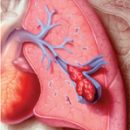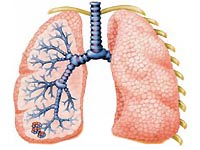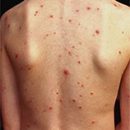Bronchiectatic disease - chronic lung disease, known to the local expansion of the bronchi and their suppuration. For bronchiectatic disease, the presence of hereditary «Weakness» bronchial wall, which leads to its abstraction and infection. More about etiology and pathogenesis of bronchiectatic disease you will learn from the article.
Content
Bronchiectatic lung disease — Disease characterized by local expansion and deformation of small bronchi, their suppuration. What caused the occurrence of bronchiectatic disease? Etiology and pathogenesis of the disease originate in the congenital inferiority of the bronchial wall, her «Weakness», arising from the underdevelopment of the muscular shell, elastic and cartilage tissue.
Etiology of bronchiectatic disease
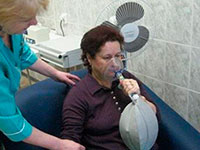 First of all, we will clarify the difference between the bronchiectic pulmonary disease and bronchootases.
First of all, we will clarify the difference between the bronchiectic pulmonary disease and bronchootases.
For bronchiectatic disease, the presence of a congenital defect of bronchi is characterized, primary bronchiectases are formed in the intrauterine period of development of the fetus. Secondary bronchiectases appear as a result of infection, damaging bronchi with chronic purulent bronchitis, chronic pneumonia, tuberculosis, collagenosis, pleurite, traumatic damage to the chest organs, toxic lesions of the bronchi.
With bronchiectatic disease classified as primary bronchiectases, the infection has a secondary value, aggravates the hereditary defects of the bronchial tree and leads to the further development of the pathological process. These are the basic concepts, the causes of bronchiectatic disease, its true etiology has not yet been studied.
Bronchiectatic disease: pathogenesis
Congenital inferiority of the bronchi is implemented as a result of many factors.
- Obstructive atelectases of the lungs against the background of impaired bronchial patency, with a reduced activity of the surfactant, the compression of the bronchi by increased binding lymph nodes or blockage of tight mucos during acute respiratory diseases.
- Excessive expansion of bronchi with a strong cough, cluster a large number of bronchial secret.
- Reducing the resistance of bronchi on the background of pronounced inflammation. Initially «Weak» The bronchial wall can not withstand the action of an infectious agent, the cartilaginous record of the bronchi collapses, the muscle tissue is weakening and the disease goes to the next stage.
 Infectious factor in the development of bronchiectatic disease, pathogenesis of infection of bronchi.
Infectious factor in the development of bronchiectatic disease, pathogenesis of infection of bronchi.
- Infection «Set up» In bronchi due to the accumulation of an infected secret, bronchiectatic pulmonary disease, characterized by the presence of preventable bronchial extensions, is accompanied by a large number of mucus in bronchi.
- Chronic flow of any disease reduces the immune defense of the body, not the exception and illness of the lungs. Bronchiectatic disease violates local and general immunity, as a result of which bronchi suffer.
Long flow of bronchiectatic disease, for which the presence of pulmonary hypertension is the cause of myocardial overload and the development of the pulmonary heart
Bronchiectatic disease: classification
Types of bronchiectatic disease, depending on the classification of forms of bronchiectase, are:
- hurried;
- vertenorate;
- cylindrical, mixed.
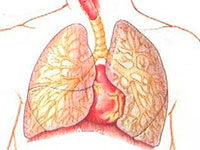 By clinical flow, bronchiectatic disease, the etiology of which is associated with the hereditary weakness of the bronchial wall, may be:
By clinical flow, bronchiectatic disease, the etiology of which is associated with the hereditary weakness of the bronchial wall, may be:
- Easy, exacerbations of the disease are observed 1-2 times a year, during periods of long remission patients feel quite healthy.
- Pronounced when exacerbations are more often, at this time the patient coughes up to 200 ml of sputum per day. During the remission, sputum is reduced to 50 ml per day, patients continue to feel some respiratory failure.
- Severe, with frequent and lengthy exacerbations, with high temperature and pronounced intoxication, release more than 200 ml of sputum. Periods of improvement are short-lived and patients remain disabled.
- Complicated form of bronchiectatic disease, according to classification — This is a disease characterized by the development of the pulmonary heart, cardiac and respiratory failure, amyloidosis, jade.
Depending on the prevalence of the process, bronchiectatic disease happens:
- one-sided;
- bilateral.


